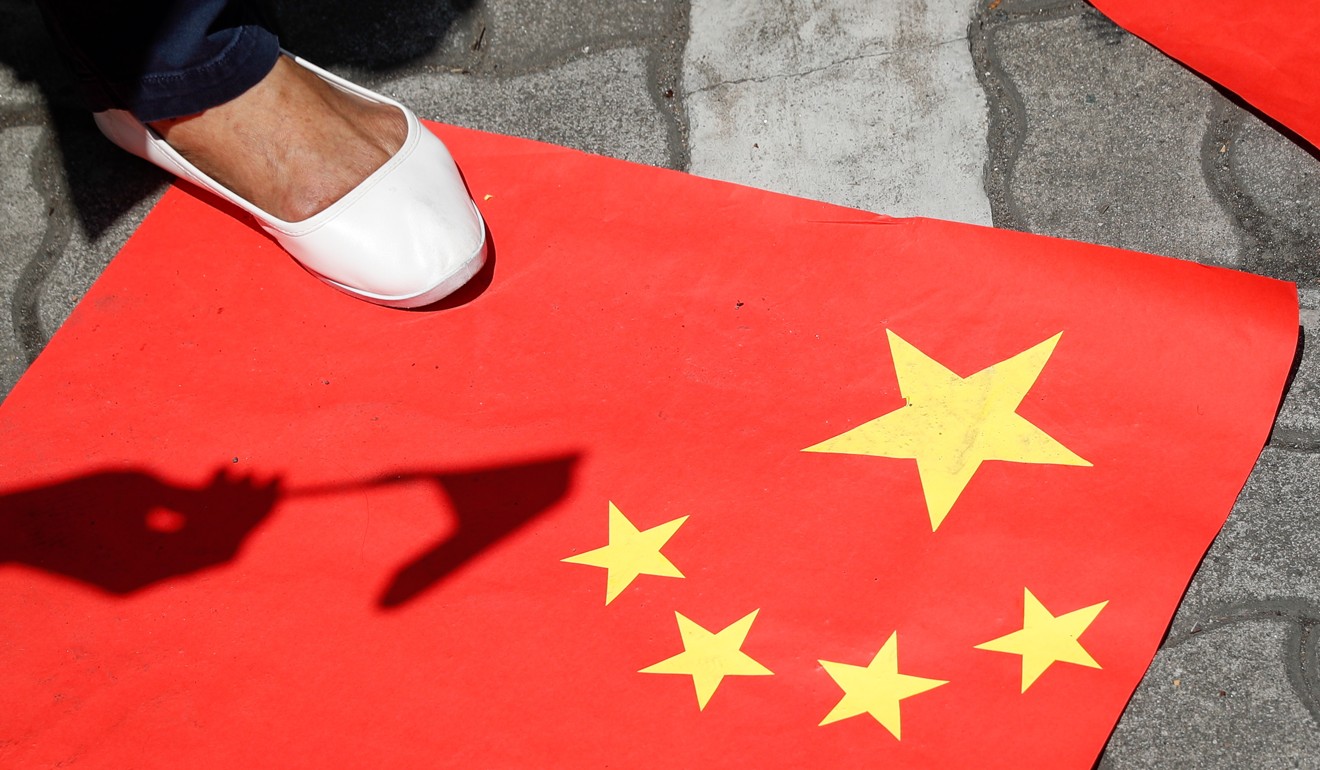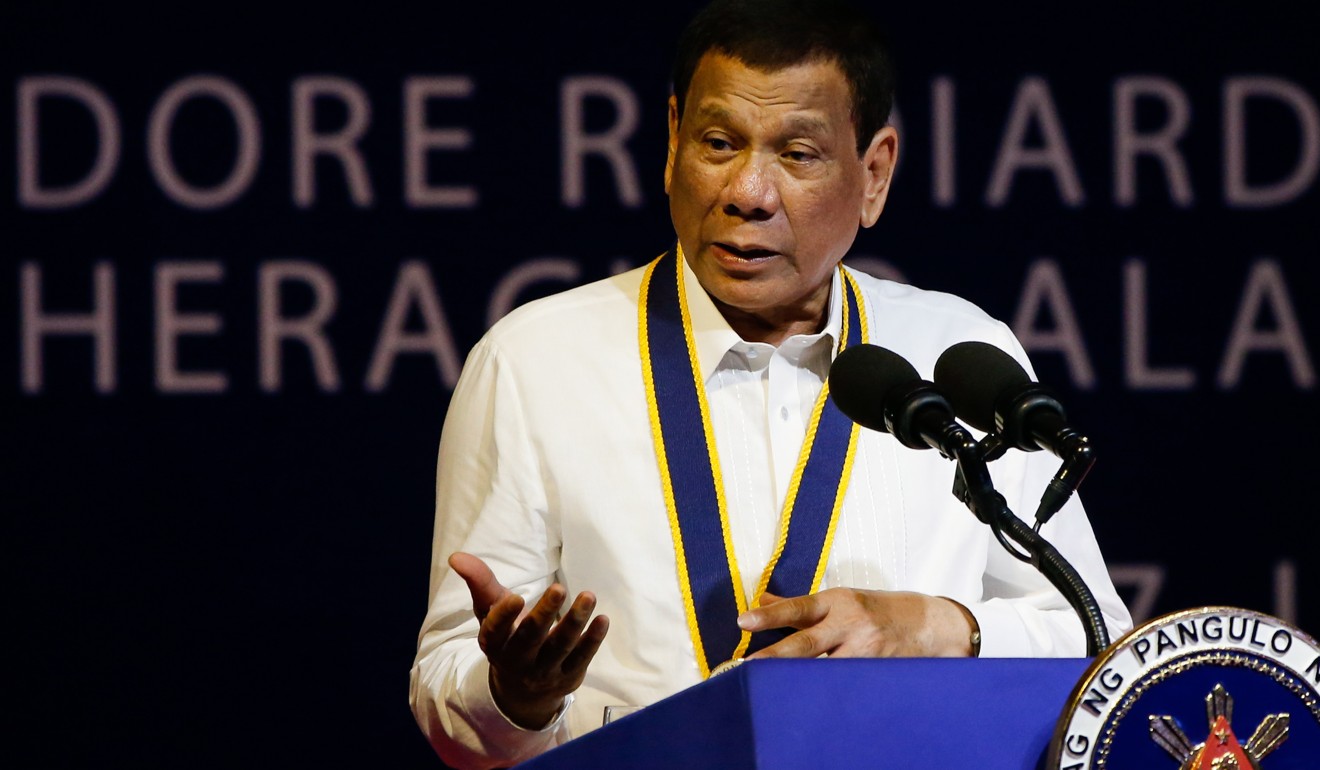
Why China’s ‘militiasation’ of the South China Sea needs a review by the Philippines-US alliance
- Richard Heydarian writes that Manila and Washington could rewrite their pact to target emerging threats in the South China Sea – including the recent ‘grey zone’ ramming of a Philippine fishing boat by a suspected Chinese militia vessel
“Never let a good crisis go to waste,” the late British prime minister Winston Churchill advised.
Ahead of his fourth State of the Nation Address on Monday, Philippine President Rodrigo Duterte is coming under growing pressure to dial down his rapprochement with China.
The Reed Bank crisis, which saw a suspected Chinese militia vessel sink a Philippine fishing boat in June, has energised those who advocate upgrading the Philippine-US alliance.
Latest surveys show a growing number of Filipinos now favour both a tougher stance in the South China Sea and more cooperation with traditional allies against China.

This month, the Philippines and the United States will officially begin the annual review of the Mutual Defence Treaty signed in 1951.
This year’s review, however, is likely to be the most crucial since the end of the cold war, mainly because it comes after Philippine Defence Secretary Delfin Lorenzana openly questioned the alliance’s utility and relevance to the Philippines today.
“When [the treaty was negotiated] … there was this raging cold war. Do we still have a cold war today? Is it still relevant to our security? Maybe not,” he said in December.
He even acknowledged there was a possibility the alliance could be scrapped altogether.
“We are going to … look at it in the backdrop of what’s happening in the area, in the interests of the nation, not the interests of other nations,” he said.
At the heart of Lorenzana’s call for a comprehensive review of the alliance are lingering concerns over American “ambivalence” regarding its commitments to the Philippines as well as Asia’s shifting geopolitical environment.
Spearheading the review process will be this year’s Mutual Defence Board-Security Engagement Board – a series of annual defence and security-related meetings in which senior defence officials from the Pentagon and the Philippine armed forces assess the state of their military cooperation.
Duterte’s address comes just weeks after the ramming of a Philippine fishing boat by a suspected Chinese militia vessel in the South China Sea.
The incident, which, ironically, happened on Philippine-China Friendship Day, has rocked the Duterte administration, triggering a widespread backlash against its ongoing rapprochement with Beijing.
Did a fishing boat collision scupper Duterte’s detente with China?
Duterte, who has assiduously pursued warmer ties with China, has come under heavy criticism – even from some of his allies, soft oppositionists and independent senators, all of whom favour a tougher position in the contested waters.
Crucially, Senator Panfilo Lacson, a leading independent statesman and potential 2022 presidential contender, has openly called for invoking the Mutual Defence Treaty to check Chinese expansionism in Philippine waters.
Three years into office, Duterte is under growing pressure to upgrade, rather then vitiate or abandon, the Philippines’ sole treaty alliance, thanks to China’s increasingly aggressive behaviour in the disputed waters.
This year’s review of the Philippine-US alliance is particularly timely.

When Lorenzana called for a comprehensive review of the alliance and raised the spectre of scrapping it, the former Washington defence attaché suggested replacing it with a new non-aligned foreign policy. Months later, however, the Philippine defence chief struck a different tone, this time raising his ire against China.
Then, on June 12, the Philippines’ Independence Day, Lorenzana publicly condemned the Chinese vessel’s “cowardly action” after the ramming incident at Reed Bank, a contested energy-rich area within the Philippines’ exclusive economic zone and China’s “nine-dash line”, a rough Chinese demarcation of its territorial claims in the strategic waters.
The collision left 22 Filipino fishermen abandoned at sea until a passing Vietnamese ship picked them up. The Chinese vessel fled the scene.
After days of silence, Duterte shocked many across the country by effectively parroting China’s line, downplaying the incident as a “little maritime accident”.
Making matters worse, he said he had a binding “verbal agreement” with China’s President Xi Jinping that allowed Chinese vessels to operate within the Philippines’ exclusive economic zone. He dismissed the Philippine constitution’s call for protection of the nation’s marine resources as “thoughtless” and “senseless”.
A fully fledged political crisis then ensued, as critics – including the wife of the captain of the sunken Philippine vessel – called for Duterte’s impeachment. In response, the besieged and visibly shaken president warned that he would jail anyone who dared to support the call.
Chinese vessel mainly to blame for sinking of Philippine boat: leaked report
The Reed Bank crisis underscored three developments.
First, Duterte is stubbornly determined to pursue warmer ties with China, his main strategic patron, even at the cost of his own political capital.
Second, antipathy is widespread towards Beijing among the Philippine political elite and broader public, who saw the collision as an evidence of China’s menacing expansionism in adjacent waters.
And finally, a clear threat is present in China’s “militiasation” of the disputes, most evident in its deployment of an armada of fishermen-cum-militia forces to the disputed Spratlys as well as the collision in the Reed Bank, which likely involved a Chinese militia force.

This is China’s “people’s war at sea” strategy in full light.
Against the backdrop of growing Chinese threats to the Philippines, the Pentagon and the US state department have progressively clarified the parameters of America’s commitment to the Philippines.
That comes at a time of increasingly close security cooperation between the Philippine defence establishment and the US, underscoring the Philippine military’s relative autonomy from Duterte’s China-leaning diplomacy.
So the Reed Bank crisis will only strengthen the Philippine defence establishment’s push for closer cooperation with the country’s traditional allies, against China.
The Philippines and the US have 280 bilateral defence activities scheduled this year, the most in the US Indo-Pacific Command’s area of responsibility.
Under the Enhanced Defence Cooperation Agreement, Washington and Manila are set to develop 12 defence-related projects aimed at enhancing interoperability and a joint response to common threats.
Recent years have also seen more frequent deployment of American aircraft carriers as well as “freedom of navigation operations” in the Philippines’ exclusive economic zone, including in the Scarborough Shoal, the return of joint war games in the South China Sea, involving the US’ most advanced military assets; and deepening cooperation between Philippine and US coastguard forces.
As well, the Pentagon, in its newly released Indo-Pacific strategy paper, declared that “robust annual cooperation ensures our forces maintain a sufficient level of interoperability to respond in times of crisis”.
Crucially, the Philippine defence establishment has also welcomed Washington’s growing strategic clarity.
Could Manila’s flip-flopping over Reed Bank make Beijing more aggressive?
Earlier this year, US Secretary of State Mike Pompeo said that as the South China Sea was part of the Pacific, “any armed attack on Philippine forces, aircraft or public vessels in the South China Sea will trigger mutual defence obligations”.
As the Reed Bank crisis heated up, Sung Kim, the US ambassador to the Philippines, raised the stakes by suggesting that the Mutual Defence Treaty could be invoked in “any armed attack” including “government-sanctioned Chinese militia” aggression against Philippine assets in the disputed areas.
By contrast, when previous US administrations have spoken about America’s alliance commitments concerning the Philippines, they have broadly focused on conventional military-kinetic actions by any third party aggressor and “the Pacific” theatre, without specifically mentioning the South China Sea.
This ambiguity has irked senior Philippine defence officials.

At this point, an overhaul of the alliance, including rewriting the specific provisions of the Mutual Defence Treaty, seems out of the question. So does the earlier suggestion of scrapping it entirely.
But Manila and Washington, as Lorenzana told the author, were likely to introduce revised guidelines that would enhance the respective governments’ ability to respond to new external threats, in particular any aggression from China’s armada of militia forces that falls under a “grey zone”.
Such direction is not without precedent.
Duterte thought he had an understanding with Beijing, then came Reed Bank
In the early 2000s, amid the emergence of new threats from non-state actors amid the global “war on terror”, the Philippines and the US similarly upgraded their alliance, and new guidelines oversaw closer counterterrorism cooperation and expanded American special forces’ access to major bases across the Philippines.
It was precisely these guidelines that allowed for swift and decisive American help at the onset of the Marawi siege between Philippine government security forces and radical extremist groups in 2017.
Today, the two allies can similarly introduce new operational guidelines, specifically targeting emerging threats in the South China Sea.
Down the road, the Philippines could finally allow, after years of delays, American pre-positioning of weapons in strategic bases close to the disputed areas, particularly the Basa Airbase (nearest to the Scarborough Shoal) and Bautista Airbase (nearest to the Spratlys).
These breakthroughs would be part of an upgraded alliance structure which could better respond to Chinese grey-zone threats in the South China Sea.
What the region is confronting now is China’s full-fledged “militiasation” of the South China Sea disputes, and this should be the focus of the upcoming review of the Philippine-US alliance.
Richard Heydarian is a Manila-based academic and author

